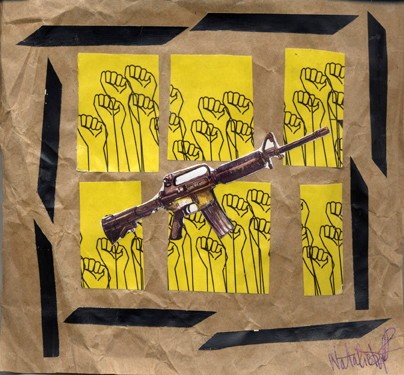Flu shot season in the Holy Land
Why the two-state solution doesn’t address the fundamental issue
With United States President Barack Obama overseeing talks last week between Israeli Prime Minister Benjamin Netanyahu and Palestinian Authority President Mahmoud Abbas, the idea of a two-state solution to the conflict is becoming increasingly possible. Obama has expressed a strong commitment to achieving such a goal and has been successful on getting the two sides to talk about it.
However, history suggests that this isn’t so much a path towards peace, but more so a bridge that bypasses all the dirt underneath. Having Palestine recognized as an independent country is a legality, not a cure. The creation of a sovereign state of Palestine has no direct correlation to peace.
Consider it this way: If we rank the importance of the steps that need to be taken to create peace between Israel and Palestine, does the recognition of Palestine as a legitimate state in the eyes of the West remain priority one? Does it reconcile the differences between these two groups?
After all, Palestinians already consider themselves a country. They elect their own leaders and have a profound sense of nationalism.
What actually needs to be addressed in these talks is how the people of Israel and Palestine can live in peace with each other. For this to happen, politicians have to work at converting the public. The two-state solution fails to address this issue.
How the majority feel toward each other is fundamental to establishing peace. Having an elite group of politicians decide on where invisible lines should be drawn on the map is an impractical way of winning over the hearts and minds of millions of people.
“ National borders divide people and sadly those imaginary lines engrave profound divisions within people’s minds.
There needs to be peaceful rhetoric, backed with actions.
One can criticize this suggestion as being far too ideological and unrealistic, saying that politicians will never relinquish so much power for the betterment of humanity. It’s important to be skeptical of such suggestions.
However, the two-state solution is also rabidly ideological and it doesn’t address the underlying issue. National borders divide people and sadly those imaginary lines engrave profound divisions within people’s minds.
Obama seems to be selling the liberal idea of democratic peace theory, where functioning, side-by-side democracies are unlikely to go to war with one another. Unfortunately, it doesn’t apply in such a deep-rooted religious conflict.
Also, in the two-state solution the question regarding the city of Jerusalem is exceedingly important. Since this conflict has deeply embedded religious roots, with both Arabs and Jews regarding the city as a fundamental holy landmark, how are the rights to the city to be divided? It’s long been decided that it should be shared, but how? How can the two-state solution practically address this?
For the protection of human rights on both sides of the fence, talks should be directed towards a singular democratic state that has equal rights for all its citizens. This is a longer-term goal, but it is more unifying than a two-state solution, in which both peoples would undoubtedly be locked into stiff competition for limited land and resources.
There will be some benefits to the two-state solution, such as the ability for the Palestinians to compete more “legitimately” in the global economy. If we take the bottom line of religious division into account, it is like giving the conflict a flu shot – but then having to go back next year once the virus has mutated.
The conflict will mutate, not dissolve.
Matt Austman is a University of Winnipeg student.
Published in Volume 64, Number 5 of The Uniter (October 1, 2009)







